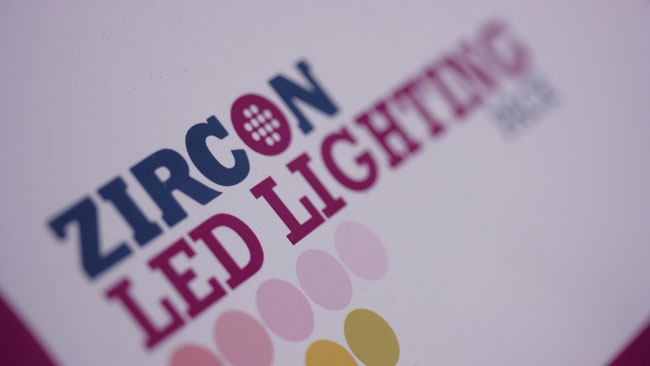
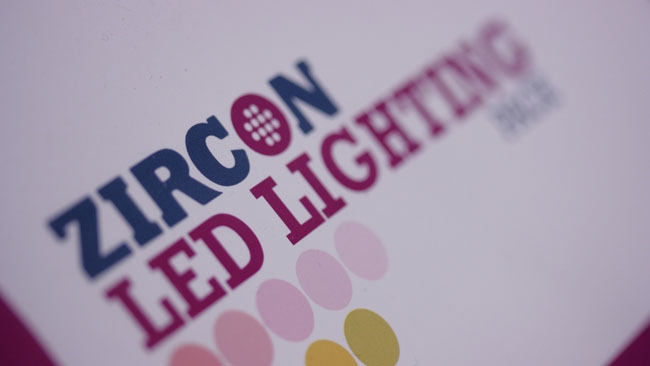 Lee Zircon filters for LED lighting
Lee Zircon filters for LED lighting
Our Technical Editor reveals why standard filters are unsuitable for LED lighting and reviews Lee's line of Zircon filters, which were specifically designed for use with LEDs.
Given the amount of time we spend thinking about colorimetry, it should be fairly clear by now that generating, filtering and photographing white light is far from straightforward. With various gas discharge and solid-state technologies in use alongside more traditional approaches, the need for filters to achieve any kind of consistency is common. At the same time, though, the variability of certain devices, even on a batch-to-batch basis, makes filtration an exercise in empirical eyeballing.
This isn't an entirely new situation. After all, colour temperature correction filters in blue and orange (CTO and CTB) have existed for decades. Companies such as Lee Filters have been producing LED-oriented versions of some of their colours for a while. Even so, there are specific technical considerations which make filters for LED rather unique. Principally, there's the issue that white-light LEDs are based on blue LEDs that are a source of very shortwave radiation in a way that even traditional lighting isn't. As a result, the company reports that some traditional filters could be bleached in a few tens of hours by modest LED sources, given the high point intensity of even small LEDs. Given that the purpose of colour correction filters in these circumstances is to achieve consistency, colour that wanders that fast is unhelpful.
Zircon: Specially designed for LED
Enter the Zircon range. These filters are designed particularly for robustness in the face of lights emitting lots of shortwave radiation. In order to achieve this robustness, an entirely new and proprietary manufacturing procedure, regarding the dyes, was used (although the coating plant is the same). To this point, Lee states that it hasn't yet established how possible it is to rework its entire range to the Zircon standard, since the new dye formulation differs significantly. At the moment, the range includes warm and magenta filters with similar intent to pre-existing CTO and minus-green types. The Zircon filters are also coated onto a plastic base of more than twice the thickness, representing a demand for filters that are somewhat self-supporting when clamped on two opposite edges, as they often are when inserted into striplights containing LED ribbon. Lee cautions that the new filters, being designed for cool-running LED lighting, don't have the same fire retardant properties as the old.
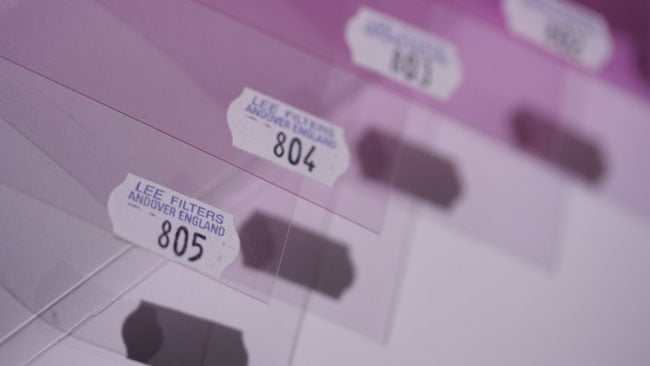 Lee Zircon minus-green filters
Lee Zircon minus-green filters
The minus-green filters, numbered 801 to 805, are fairly conventional in appearance, being roughly equivalent to magenta filters CC01M, CC02M, CC03M, CC05M and CC10M, and are named Zircon Minus Green 1 to 5 from strongest to palest. The warming filters, named Zircon Warm Amber 2, 4, 6 and 8 and numbered 806 to 809, are to the eye more strawlike than extant CTO filters.
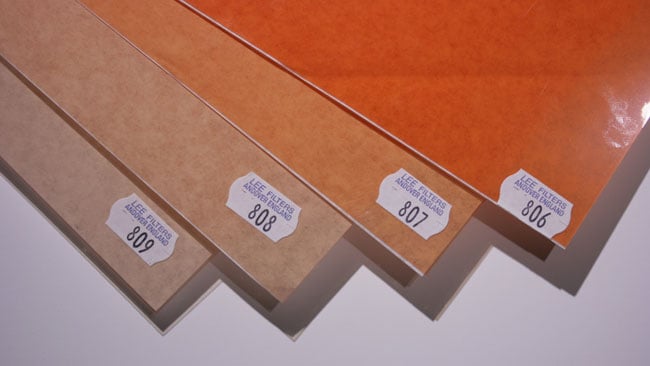 Lee Zircon warming filters
Lee Zircon warming filters
Zircon also includes a selection of three diffusions, numbered 810 to 812 and called Zircon Diffusion 1, 2 and 3, which Lee describes, respectively, as similar to pre-existing diffusions numbered 216, 416 and 250. These, we might assume, will be useful to people interested in diffusing away the field of light points produced by Litepanels-style LED arrays, although naturally there will be a considerable sacrifice in punch and throw.
Of these, perhaps the amber series is the most interesting, being intended to counteract the tendency of LEDs toward cooler colours. This tendency exists as a manufacturing convenience in the lower-cost end of the market. LEDs are more efficient when less of their output goes through the phosphor conversion process that turns blue light into yellow, allowing manufacturers to post more impressive output and efficacy figures for devices with cooler output. It's worth noting here that if we want tungsten light, it will still be more efficient to pick tungsten LEDs to begin with, since the reduced efficacy of warmer LEDs will still be more efficient than filtering a daylight LED. Nonetheless, Lee #806 Zircon Warm Amber 2 does look, to the eye at least, to have equivalent strength to a full daylight to tungsten correction, and Lee suggests that it will convert a 5500K (thus daylight) LED to 3000K (thus tungsten), so the option to do it exists.
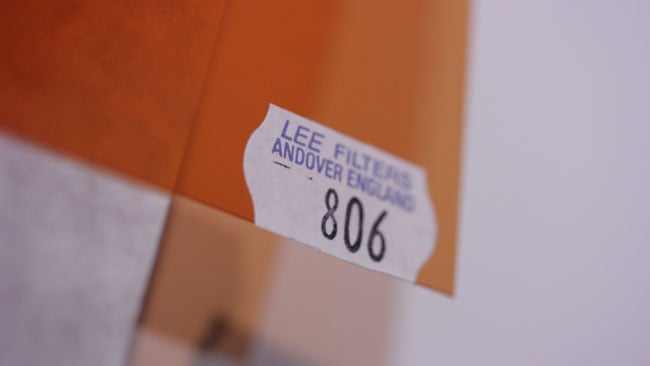 Lee Zircon #806 filter
Lee Zircon #806 filter
One of the notable things about the Warm Amber series is that its not a simple graduation of colour intensities, whereas the first few magenta filters are. This nonlinearity within a series is fairly normal for filters intended to produce a particular colour temperature shift and suggests that the available filters have been designed quite specifically in terms of their transmission spectrum, taking into account the spectral oddness of LED lighting in general.
Proper perspective
With this in mind, we should mention the obvious: LED lighting in general can currently be very inconsistent. While the very best types currently mix well with true tungsten and daylight-matched lighting respectively, they remain incomplete-spectrum light sources; two LED devices that appear well-matched to the eye and on camera may not react to filtration in the same way. At the less-expensive end of the market, it's a free-for-all of mismatching and a different daylight, as we've discussed before, for every day of the week. This forces companies like Lee into a corner: filters are needed, but there can be no way to ensure they are matched to the light source in the same way CTO and CTB are matched to ideal tungsten or daylight.
Lee is at pains to point out that "colour temperature shift varies with type of LED" and even that the diffusion may not be entirely colour-neutral under some very specific circumstances. This is a good, responsible and upfront approach which should be applauded, especially since the inconsistency of LED lighting isn't any of Lee's doing in the first place. The Zircon range is, then, about as good a solution as currently could exist. If anything more is needed, it may be even subtler grades, with intensities similar to the one-eighth strengths of CTO and CTB (or perhaps even paler than that). These would be useful for trimming out tiny batch-to-batch imperfections and the effects of ageing on LEDs, which is something that can only be done in the moment, by eye or by monitor.
It's also worth mentioning that Lee has already produced saturated effects colours intended for LED lighting. Because traditional filters in highly-saturated colours can have spectral pass bands that match poorly to the light actually output by an LED, very saturated colours can result in very little light actually making it through the filter. As such, filters designed to match LED to traditional lighting using saturated colours can look disarmingly different than the tungsten-oriented versions of the same thing. The popular #181 Congo Blue, for instance, is a very deep, extremely saturated blue that borders on the ultraviolet, but the version intended for cool-white LEDs, called CL181, actually looks magenta-purple. #117 is called (and looks) Steel Blue, but CL117 looks yellow. The fact that these actually produce somewhat matching results is an indication of how difficult it is to design filters for current LEDs. In time, greater consistency in LEDs intended for film and TV work should ease the consistency and colour quality concerns. The need for specialist filters may eventually go away, but, for the time being, this is very necessary work.
Tags: Production



Comments